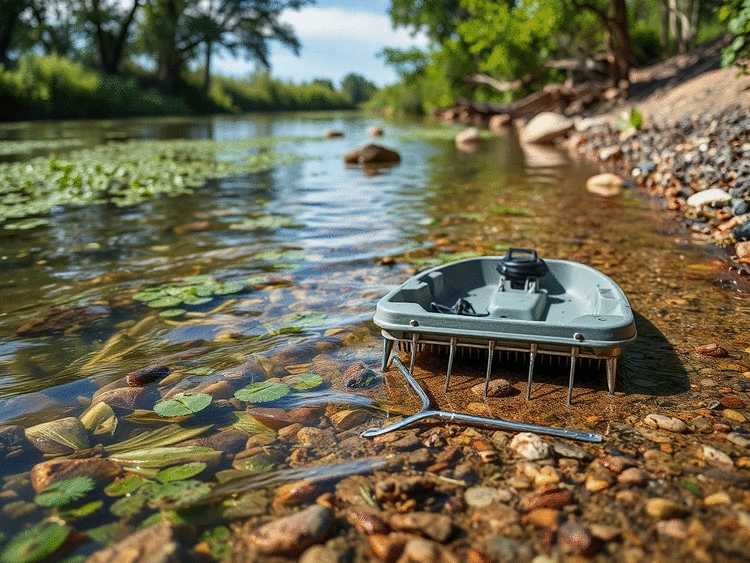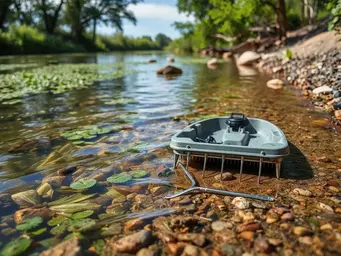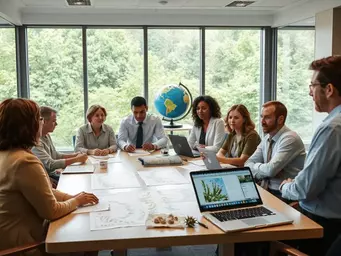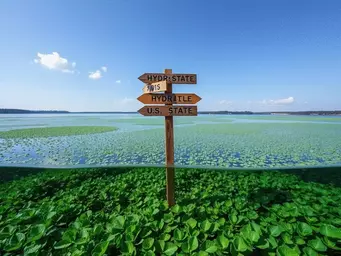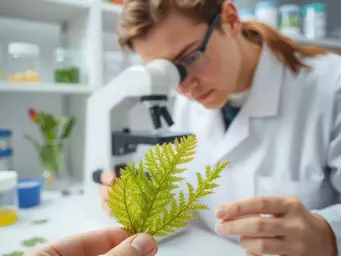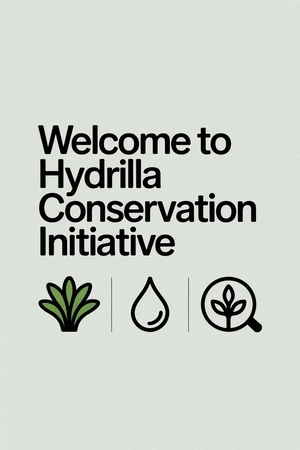In the fight against invasive species like hydrilla, every small action contributes to a greater cause. By understanding the intricacies of hydrilla's impact on our ecosystems, we can become proactive stewards of our natural resources. Let’s explore the essential lessons you can take from this article and empower yourself to make a difference.
What You Will Learn
- Hydrilla threatens biodiversity by outcompeting native aquatic plants essential for local ecosystems.
- Excessive hydrilla growth diminishes water quality, reducing oxygen levels vital for aquatic life.
- The invasive plant alters habitats, impacting fish populations and recreational activities.
- Effective management strategies include regular equipment cleaning, monitoring water quality, and community outreach initiatives.
- Engaging in local initiatives and reporting hydrilla sightings are critical for community efforts in conservation.
The Dual Impact of Hydrilla: A Threat to Ecosystems and a Call to Action
Hydrilla poses a significant threat to our waterways, altering habitats and impacting water quality. Understanding its invasive nature is crucial for effective management and the protection of native species. The visual below highlights its key impacts and essential prevention strategies.
Hydrilla's Invasive Nature
- •Rapid Growth Rate: Up to an inch per day, dominating waterways quickly.
- •Reproductive Flexibility: Reproduces via fragments, tubers, and turions.
- •Environmental Tolerance: Thrives in diverse water conditions.
Impact on Waterways
- •Altered Habitats: Native species struggle, leading to population declines.
- •Impaired Water Flow: Thick mats obstruct waterways, causing flooding.
- •Increased Sedimentation: Traps sediment, affecting water clarity.
Prevention Strategies
- •Equipment Cleaning: Regular decontamination of boats and gear.
- •Inspection Protocols: Implementing effective checks for hydrilla.
- •Community Engagement: Education and outreach initiatives.
Role of Native Species
- •Promote Biodiversity: Enhance ecosystem resilience.
- •Maintain Water Quality: Prevent erosion and filter pollutants.
- •Provide Habitat: Support overall ecological balance.
Understanding the Threat of Hydrilla Spread
The threat posed by hydrilla to our ecosystems is more significant than many realize. This invasive plant can rapidly take over local waterways, disrupting the natural balance and harming native species. By understanding its impact, we can better appreciate why it's essential to take action against its spread.
As an aquatic biologist, I’ve seen firsthand the devastating effects hydrilla can have on our beloved ecosystems. Its unchecked growth can choke waterways, reduce biodiversity, and diminish water quality. Without intervention, hydrilla can transform rich habitats into monocultures, making it vital for environmental professionals and educators to act decisively.
<Why Preventing Hydrilla is Critical for Ecosystems
Preventing hydrilla's spread is crucial for maintaining healthy ecosystems. Here are a few reasons why:
- Protecting biodiversity: Hydrilla outcompetes native aquatic plants, leading to a decline in species that rely on these plants for habitat and food.
- Maintaining water quality: Dense hydrilla growth can reduce oxygen levels in the water, harming fish and other aquatic life.
- Ensuring recreational access: Overgrown waterways can limit access for boating, fishing, and swimming, impacting local economies.
By focusing on prevention, we not only protect our ecosystems but also the communities that depend on them. Every effort counts, and it's our collective responsibility to safeguard our waterways.

The Impact of Hydrilla on Local Waterways
Hydrilla’s invasion can lead to profound changes in local waterways, impacting everything from fish populations to recreational opportunities. Here are some key effects:
- Altered habitats: Native species may struggle to thrive in areas dominated by hydrilla, leading to population declines.
- Impaired water flow: Thick mats of hydrilla can obstruct waterways, causing flooding and affecting drainage systems.
- Increased sedimentation: Hydrilla can trap sediment, disrupting the natural sediment flow and affecting water clarity.
Understanding these impacts is the first step in managing hydrilla effectively. We must work together to mitigate these effects and restore the balance in our ecosystems.

Understanding Hydrilla verticillata and Its Invasive Nature
Hydrilla verticillata, often simply referred to as hydrilla, is a highly adaptive aquatic plant. Its rapid growth and ability to reproduce vegetatively make it a formidable invader. Here are some characteristics that define its invasive nature:
- Rapid growth rate: Hydrilla can grow up to an inch per day in optimal conditions, quickly dominating a waterway.
- Reproductive flexibility: This plant can reproduce through fragments, tubers, and turions, making it incredibly resilient.
- Environmental tolerance: Hydrilla thrives in a range of water conditions, from freshwater lakes to slow-moving rivers.
Equipped with this knowledge, we can better strategize our efforts to combat hydrilla and protect our precious ecosystems. It's essential for everyone, from environmental professionals to everyday citizens, to recognize the signs of hydrilla and take appropriate action. For further reading on management plans, you can refer to resources like the Raystown Lake Hydrilla Management Plan.
We Want to Hear From You!
What measures do you think are most effective in preventing the spread of hydrilla? Share your thoughts below:
Frequently Asked Questions About Hydrilla
What is hydrilla and why is it a threat?
Hydrilla (Hydrilla verticillata) is a highly invasive aquatic plant known for its rapid growth rate (up to an inch per day) and ability to reproduce through fragments, tubers, and turions. It threatens ecosystems by outcompeting native plants, reducing biodiversity, diminishing water quality (by lowering oxygen levels), and obstructing waterways.
How does hydrilla impact local waterways and ecosystems?
Hydrilla profoundly impacts waterways by altering habitats for native species, leading to population declines. Its thick mats can impair water flow, causing flooding, and it traps sediment, affecting water clarity. This invasive growth also impacts recreational activities like boating and fishing.
What are the key strategies for preventing the spread of hydrilla?
Effective prevention strategies include regular cleaning and decontamination of boats and equipment, implementing strict inspection protocols, utilizing physical barriers, monitoring water quality, and engaging in community education and outreach initiatives. These measures help prevent the transportation of hydrilla fragments between water bodies.
Why is community involvement important in controlling hydrilla?
Community involvement is crucial because it amplifies efforts to prevent and manage hydrilla. Individuals can contribute by joining local clean-up events, reporting hydrilla sightings to environmental authorities, participating in workshops, and collaborating with local organizations to raise awareness. These collective actions create a robust network for waterway protection.
What is the role of native species in combating invasive plants like hydrilla?
Native species are vital for maintaining ecosystem health and resilience. They promote biodiversity, help maintain water quality by preventing erosion and filtering pollutants, and provide essential habitats for wildlife. Protecting and promoting native species is as important as managing invasive ones, as a healthy native ecosystem is more resistant to invasive incursions.
Summary of Key Strategies for Preventing Hydrilla Spread
As we work to protect our waterways, it’s vital to stay informed about the most effective equipment and waterway management techniques available. The fight against hydrilla requires a multifaceted approach that combines various strategies. By understanding and implementing these methods, we can significantly reduce the risk of this invasive species spreading in our ecosystems.
- Regular cleaning and decontamination of boats and equipment
- Implementing effective inspection protocols
- Utilizing barriers and physical controls
- Monitoring water quality
- Community education and outreach initiatives
These strategies are not just recommendations; they form the backbone of a proactive approach to managing hydrilla and safeguarding our native species. For example, when we focus on equipment cleanliness, we help prevent contaminants from being transported between water bodies! Efforts in states like Michigan highlight successful initiatives in this area, as detailed in Michigan's fight against aquatic invaders.
Get Involved in Local Initiatives and Reporting
You might be wondering, “How can I make a difference?” Getting involved in local initiatives is one of the best ways to contribute to our collective efforts. Organizations like the Hydrilla Conservation Initiative provide numerous opportunities for individuals to engage in meaningful activities. Here are some ways you can participate:
- Join local clean-up events
- Report sightings of hydrilla to local environmental authorities
- Participate in community workshops or seminars
- Collaborate with local organizations to spread awareness
Every action counts! By working together, we can create a robust network of volunteers dedicated to protecting our waterways. For instance, the U.S. Fish and Wildlife Service's rapid response plan for hydrilla in Massachusetts demonstrates how organized efforts can make a significant impact.
Resources for Further Learning and Engagement
Knowledge is power, and staying informed about hydrilla and other invasive species is essential for effective management. I invite you to explore the extensive resources available through our platform. Here are some valuable tools and materials:
- Illustrated identification guides for hydrilla
- Management tutorials tailored for environmental professionals
- Policy updates relevant to invasive species management
- Webinars and online courses focusing on ecosystem preservation
Utilizing these resources not only enhances your understanding but also empowers you to take action in your community. Together, we can foster a culture of environmental stewardship that benefits everyone!
Understanding the Role of Native Species in Ecosystem Health
As we work to combat hydrilla, let’s not forget the importance of native species in maintaining ecosystem health. These species play critical roles, from supporting local food webs to stabilizing shorelines. Protecting them is as essential as managing invasive species! Here are some key points to consider:
- Native species promote biodiversity, enhancing ecosystem resilience
- They help maintain water quality by preventing erosion and filtering pollutants
- Native plants provide habitat for wildlife, supporting overall ecological balance
By prioritizing the protection of native species, we contribute to a thriving ecosystem capable of withstanding the pressures of invasive species like hydrilla. Let’s pledge to educate ourselves and advocate for these vital components of our environment!
Recap of Key Points
Here is a quick recap of the important points discussed in the article:
- Protecting Biodiversity: Preventing hydrilla's spread is essential to safeguard native aquatic plants and the species that depend on them.
- Maintaining Water Quality: Hydrilla's dense growth can deplete oxygen levels in water, adversely affecting fish and other aquatic life.
- Community Involvement: Engaging in local initiatives and reporting hydrilla sightings can significantly contribute to prevention efforts.
- Effective Management Strategies: Regular cleaning of boats, implementing inspection protocols, and community outreach are key strategies to combat hydrilla.
- Supporting Native Species: Protecting native species is just as vital as managing invasive ones, as they promote ecosystem resilience and balance.
